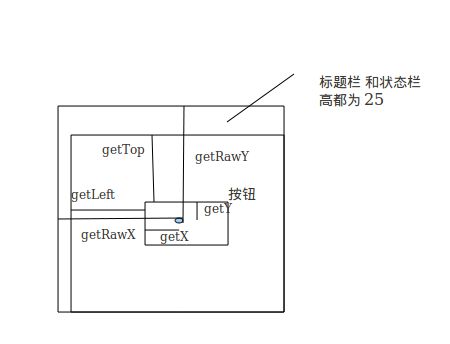android中getX(),getY() 与getRawX(),getRawY()分析
[b]先看getX(),getY()源码解释
/**
* {@link #getX(int)} for the first pointer index (may be an
* arbitrary pointer identifier).
*
* @see #AXIS_X
*/
public final float getX() {
return nativeGetAxisValue(mNativePtr, AXIS_X, 0, HISTORY_CURRENT);
}
/**
* {@link #getY(int)} for the first pointer index (may be an
* arbitrary pointer identifier).
*
* @see #AXIS_Y
*/
public final float getY() {
return nativeGetAxisValue(mNativePtr, AXIS_Y, 0, HISTORY_CURRENT);
}
这个是相对于view的坐标距离
[b]再看GetRawX(),getRawY()源码解释
/**
* Returns the original raw X coordinate of this event. For touch
* events on the screen, this is the original location of the event
* on the screen, before it had been adjusted for the containing window
* and views.
*
* @see getX()
* @see #AXIS_X
*/
public final float getRawX() {
return nativeGetRawAxisValue(mNativePtr, AXIS_X, 0, HISTORY_CURRENT);
}
/**
* Returns the original raw Y coordinate of this event. For touch
* events on the screen, this is the original location of the event
* on the screen, before it had been adjusted for the containing window
* and views.
*
* @see getY()
* @see #AXIS_Y
*/
public final float getRawY() {
return nativeGetRawAxisValue(mNativePtr, AXIS_Y, 0, HISTORY_CURRENT);
}[/b]
从字面上可以大致看到是相对于设备屏幕。
详细参见图片
